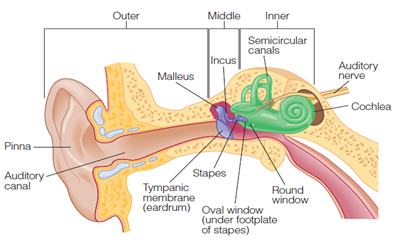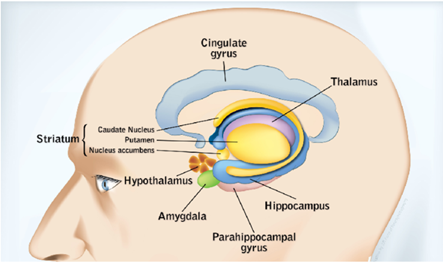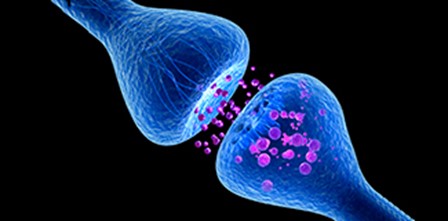From Vibration to Emotion: How Does Music Bring Pleasure?
- Diyaa Rahmani, Master’s Student in Psychology at the University of Montreal
- Isabelle Peretz, Full Professor in the Department of Psychology at the University of Montreal

When we listen to music, a symphony of emotions unfurls within us. The notes slip into our ears and ripple throughout our entire being, evoking both physical and emotional responses. The chills that traverse our skin, the quickened heartbeat, the tears that flow unbidden… all this attests to the potency of musical pleasure. But which regions of the brain are triggered to instigate this pleasure when we listen to music?
A millennia-old art that touches the soul
Music is an art that traces its origins back many centuries. The oldest discovered musical instrument is a vulture bone flute dating back over 42,000 years! This art has been passed down through generations and is found in all civilizations around the world. How has this ancient art managed to endure through time? One of the reasons lies in the ability of music to deliver pleasure. Several brain regions activate when we listen to music, allowing us to experience this pleasure. Before delving further into this, it’s important to understand how music finds its way to the brain.
How does music reach the brain?
Sound is a sequence of vibrations with varying frequencies and amplitudes (see Figure 1). These vibrations cause the eardrum and the three ossicles of the middle ear – the Malleus, the Incus, and the Stapes – to move. These ossicles then set the fluid within the cochlea into motion. It’s the cochlea that will convert these vibrations into electrical signals and transmit the electrical signal to the auditory

Figure 1: Wave diagram. The amplitude represents the height of the wave, thus the volume of the sound. The frequency denoted by the symbol lambda (λ) is the length of the wave. Short wavelengths produce high-pitched sounds, while long wavelengths produce low-pitched sounds.(Goldstein & Brockmole, 2016)

Figure 2: Internal anatomy of the ear.(Goldstein & Brockmole, 2016)
Once the signal reaches the auditory cortex, it will spread across various brain regions for analysis. To discern the nature of the sound, the electrical signal from the auditory cortex will be transmitted to the temporal lobe. If the sound is music, the electrical signal will travel to the right hemisphere’s temporal lobe, whereas if the sound is speech, the electrical signal will be directed to the left hemisphere’s temporal lobe. To determine the sound’s source (e.g., headphones, speaker), the timing of the sound’s onset, and its qualities (whether it’s high-pitched or low-pitched), the electrical signal will be transmitted to the parietal lobe (Goldstein & Brockmole, 2016).

Figure 3: Brain image illustrating the various lobes involved in sound processing.(Goldstein & Brockmole, 2016)
How do we experience pleasure?
To experience pleasure, the pleasure pathway, also known as the reward pathway, must be activated. This pathway includes the nucleus accumbens (see Figure 4), the auditory cortex, and the orbitofrontal cortex. When the nucleus accumbens is activated, it releases a crucial neurotransmitter for the sensation of pleasure: dopamine. A neurotransmitter is a small molecule that transmits electrical information from one neuron to another (see Figure 5). Once dopamine is released, the individual experiences pleasure (Zatorre & Salimpoor, 2013).

Figure 4: Diagram of the limbic system, the most ancient part of the brain. It comprises several components, including the nucleus accumbens.

Figure 5: Illustration depicting two neurons (in blue) and neurotransmitters (in purple) Home | Neurology (uconn.edu)
This discovery was made by Professor Robert Zatorre from McGill University and his team using positron emission tomography (PET) when individuals were listening to music that gave them chills. PET scanning involves injecting a radioactive substance into a person’s body and measuring its radiation using a scanner. The radioactive substance binds to a molecule of a receptor, which becomes visible in the scanner. In this experiment, they used a substance that binds to dopamine receptors. They found that when a person listens to music that gives them chills, there is a much higher release of dopamine in the striatum compared to when they listen to other types of music (Salimpoor et al., 2011).
One might assume that the reward circuit only activates when listening to familiar and pleasurable music. However, this phenomenon can also occur when listening to music for the first time. Professor Zatorre and his team aimed to examine the brain activity associated with listening to music for the first time and to explore the brain activity that can distinguish between music that becomes “rewarding” to an individual from those they do not wish to hear again. They measured brain activity using magnetic resonance imaging (MRI) on individuals listening to music they had never heard before. They assessed the reward value of each piece of music by allowing participants to “purchase” it (participants had to place a bid between $0 and $2), with higher bids indicating higher reward value. They found that the nucleus accumbens is activated when participants listen to music they enjoy. Furthermore, they discovered that the nucleus accumbens is more active when participants place higher bids. It’s important to note that musical pleasure remains a subjective and unique experience for everyone. Our favorite songs might not evoke pleasure in others (Salimpoor et al., 2013).
Can everyone experience pleasure? Is it specific to humans?
Some individuals may not experience pleasure when listening to music. Researchers refer to them as musical anhedonia. They can identify the emotions in a song (whether it’s sad, joyful, etc.), but they won’t feel any pleasure while listening to it. The study of Martinez and colleagues (2016) found that musical anhedonia exhibit decreased activity in the nucleus accumbens when listening to music, unlike other individuals. They also found a lack of connectivity with other brain regions, including the superior temporal gyrus, a crucial region for musical processing (Martínez-Molina et al., 2016).
Regarding animals, one might think that bird singing as a means of communication might experience pleasure while listening to their own singing. However, some research suggests that their singing is limited to territory defense and mating (Brown et al., 1999; Catchpole & Slater, 1996). This doesn’t mean animals don’t experience pleasure; they do experience pleasure in basic behaviors like eating or reproducing. More advanced beings like humans possess a more intricate limbic system that allows them to experience pleasure in activities not directly linked to survival, such as listening to music and appreciating art and poetry (Salimpoor & Zatorre, 2013).
Ultimately, musical pleasure is a precious gift we are fortunate to savor. It can be a source of infinite joy and a means of connecting with others. So, the next time you find yourself swept away by the melody of a song or the sound of an instrument, you’ll know the incredible journey it has taken to provide you this unique sensory experience.
Also, worth knowing
Music not only brings pleasure but can also reduce pain! Some dentists have used music as the sole analgesic during their procedures. Click on the link to learn more: Suppression of Pain by Sound | Science
Our tips
To experience pleasure every time we listen to a song, it must meet certain criteria: it shouldn’t be too simple or repetitive. If the music is simplistic or repetitive, the brain will predict what will happen next. The more the brain predicts upcoming events, the more it becomes bored and will tire of the music (Salimpoor et al., 2015).
Credit
All the topics covered in this article are discussed in the book “Apprendre la musique, les nouvelles des Neurosciences” by Isabelle Peretz, a full professor at the University of Montreal.
Bibliography
Blood, A. J., & Zatorre, R. J. (2001). Intensely pleasurable responses to music correlate with activity in brain regions implicated in reward and emotion. Proceedings of the National Academy of Sciences, 98(20), 11818‑11823. https://doi.org/10.1073/pnas.191355898
Blood, A. J., Zatorre, R. J., Bermudez, P., & Evans, A. C. (1999). Emotional responses to pleasant and unpleasant music correlate with activity in paralimbic brain regions. Nature Neuroscience, 2(4), 382‑387. https://doi.org/10.1038/7299
Brown, S., Merker, B., & Wallin, C. (Éds.). (1999). The Origins of Music. The MIT Press. https://doi.org/10.7551/mitpress/5190.001.0001
Catchpole, C. K., & Slater, J. B. (1996). Bird Song, Biological Themes and Variations. The Condor, 98(3), 670‑670. https://doi.org/10.2307/1369590
Chanda, M. L., & Levitin, D. J. (2013). The neurochemistry of music. Trends in Cognitive Sciences, 17(4), 179‑193. https://doi.org/10.1016/j.tics.2013.02.007
Gardner, W. J., Licklider, J. C. R., & Weisz, A. Z. (1960). Suppression of Pain by Sound. Science, 132(3418), 32‑33. https://doi.org/10.1126/science.132.3418.32
Goldstein, E. B., & Brockmole, J. R. (2016). Sensation and Perception (10th ed). Cengage.
Martínez-Molina, N., Mas-Herrero, E., Rodríguez-Fornells, A., Zatorre, R. J., & Marco-Pallarés, J. (2016). Neural correlates of specific musical anhedonia. https://doi.org/10.1073/pnas.1611211113
Menon, V., & Levitin, D. J. (2005). The rewards of music listening : Response and physiological connectivity of the mesolimbic system. NeuroImage, 28(1), 175‑184. https://doi.org/10.1016/j.neuroimage.2005.05.053
Salimpoor, V. N., Benovoy, M., Larcher, K., Dagher, A., & Zatorre, R. J. (2011). Anatomically distinct dopamine release during anticipation and experience of peak emotion to music. Nature Neuroscience, 14(2), 257‑262. https://doi.org/10.1038/nn.2726
Salimpoor, V. N., Benovoy, M., Longo, G., Cooperstock, J. R., & Zatorre, R. J. (2009). The Rewarding Aspects of Music Listening Are Related to Degree of Emotional Arousal. PLoS ONE, 4(10), e7487. https://doi.org/10.1371/journal.pone.0007487
Salimpoor, V. N., Van Den Bosch, I., Kovacevic, N., McIntosh, A. R., Dagher, A., & Zatorre, R. J. (2013). Interactions Between the Nucleus Accumbens and Auditory Cortices Predict Music Reward Value. Science, 340(6129), 216‑219. https://doi.org/10.1126/science.1231059
Salimpoor, V. N., Zald, D. H., Zatorre, R. J., Dagher, A., & McIntosh, A. R. (2015). Predictions and the brain : How musical sounds become rewarding. Trends in Cognitive Sciences, 19(2), 86‑91. https://doi.org/10.1016/j.tics.2014.12.001
Salimpoor, V. N., & Zatorre, R. J. (2013). Neural interactions that give rise to musical pleasure. Psychology of Aesthetics, Creativity, and the Arts, 7(1), 62‑75. https://doi.org/10.1037/a0031819
Van Den Bosch, I., Salimpoor, V. N., & Zatorre, R. J. (2013). Familiarity mediates the relationship between emotional arousal and pleasure during music listening. Frontiers in Human Neuroscience, 7. https://doi.org/10.3389/fnhum.2013.00534
Zatorre, R. J., & Salimpoor, V. N. (2013). From perception to pleasure : Music and its neural substrates. Proceedings of the National Academy of Sciences, 110(Supplement_2), 10430‑10437. https://doi.org/10.1073/pnas.1301228110